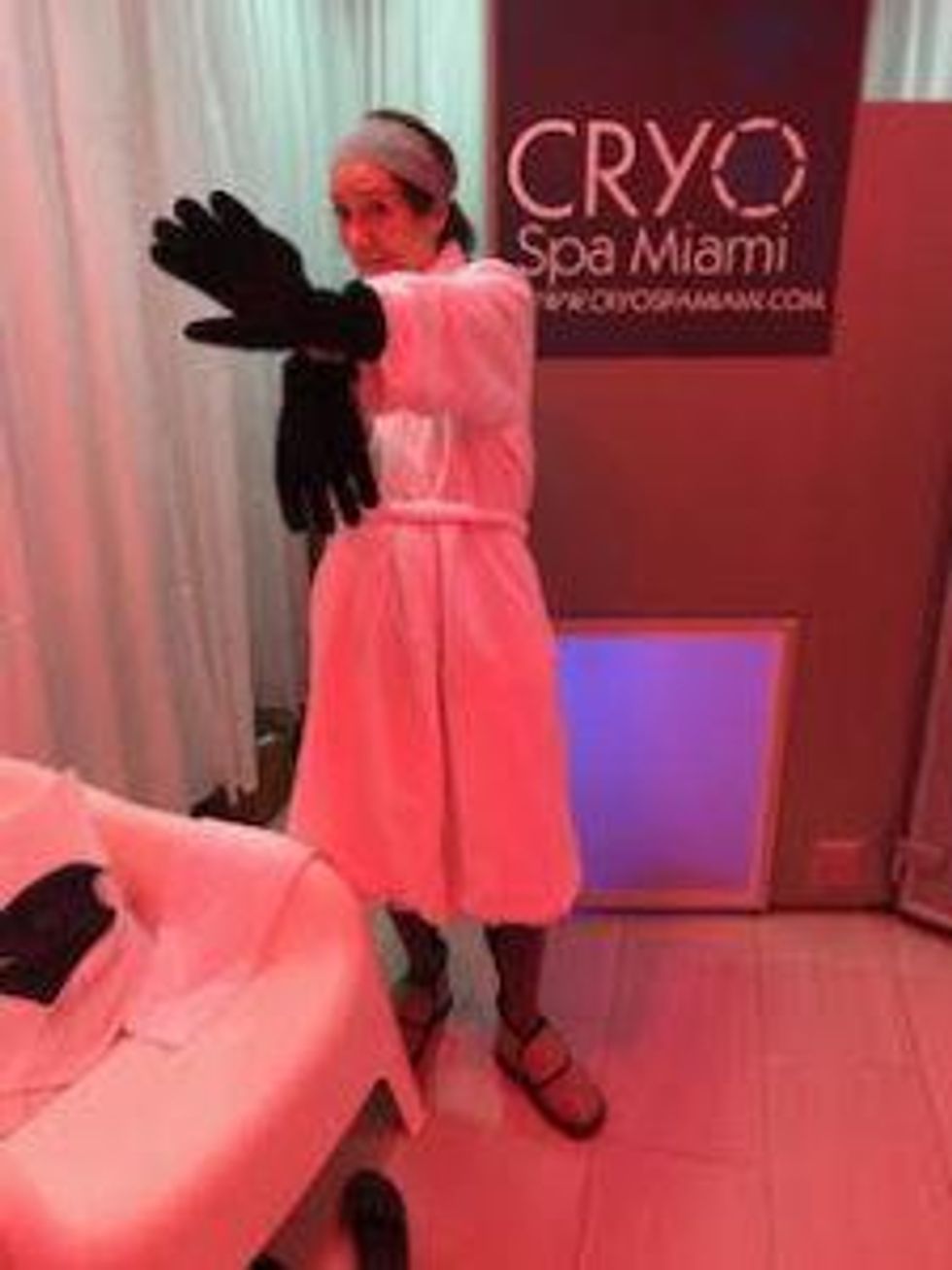I have a confession to make: I am a Frigophobic.
{{{{{{{{Frigophobia=Fear of becoming too cold … brrrrrr}}}}}}}
It's not often that I would volunteer to be cold. In fact, I detest the cold so much that I begin dreading the wintertime long before summer is even over. Once the thermometer drops below 60, my body goes into a state of permanent shivers, and throughout the always-punishing winter, I search for ways to warm my bones, like submerging my body in a hot bathtub, downing steaming hot mugs of coffee or tea or hiding under a layer of blankets until the arrival of summer.
So why in the world would I willingly enter a freezing cold chamber—one that is colder than the lowest natural temperature ever recorded on this planet—that boasts temperatures of minus 250 degrees Fahrenheit?
For one, I was curious. For another, I was away at a spa, and when I go to spas, I always welcome the opportunity to try new things.
And … it just happened to be my birthday. Growing a year older has a way of making me feel a bit more emboldened. Unlike some people, I have no so-called bucket list, but here was a chance to perform my big dare. (OK, it wasn't exactly skydiving—which a good friend of mine did to celebrate her birthday—but it might as well have been.)
All geared up for cryo!
I also was lucky to be at the spa with a few other journalists—new friends who supported me through my experience. "I'll do it if you do it" was all I needed to say to get them to line up and play cheerleader while they let me play (a freezing) guinea pig.
Cryotherapy is an intense form of cold therapy, a procedure I knew very little about. My limited knowledge of it was that professional athletes use it to ease pain and muscle stiffness, much the same way ice would be applied to an injury to help reduce swelling and improve blood flow.
Cryotherapy is a whole-body treatment. Rather than applying an icepack or sitting in a tub of ice or freezing water (unthinkable!), you stand in a chamber (from which your head peeks out) that gets its very cold temperature from compressed gas (nitrous oxide) stored under high pressure.
Some other reported benefits of cryotherapy include: better sleep; faster metabolism (which can fuel weight loss); relief from anxiety, depression, fatigue, jet lag and migraines; and improved skin tone and energy.
Turnberry Isle in Miami—which was just named the #2 resort in Florida by the readers of Conde Nast Traveler—was the scene of my experience with cryotherapy, or cryo for short. Its âme Spa & Wellness Collective, offers a host of other treatments and is housed in a beautiful three-story, 25,000-square-foot sunlit building where you can also find other goodies like massages and facials, hydrotherapy, a Himalayan salt and infrared sauna chamber, medical and fitness offices and a dizzying array of classes including Zumba, spin, Pilates and yoga.
Integrative medicine physician Dr. Vladimir Turovsky, Turnberry Isle's expert in Oriental medicine and energy work, calmly answered all my pesky questions. Will I freeze? ("I promise you, you won't.") Will it hurt? ("No, it won't, but make sure to rotate your body throughout the two minutes.") Can it freeze my face in time? (OK, this last one wasn't really serious, but being that I was turning a year older, I thought I'd throw it out there.)
Dr. Turovsky explained that my session would last just two minutes, and that the booties and gloves they supplied would assure my extremities would not get frost-bitten. (I wore my own sports bra and bottoms, and removed all my jewelry.) Usually done in a series of about three-minute sessions (5 to 10 are suggested to see full results), this one would just be a "tease" and give me an idea of how it feels to face sub-Arctic temps.
It was time. All geared up, I tentatively stepped into the chamber, feeling nervous but then empowered, peered outside at my friends who gathered around, rapt and curious. A blast of air surrounded my body, but it didn't make me shiver; instead, as I spun around like a whirling dervish (freezing cold temps make you do strange things), I felt surprisingly calm but energized. The only place where I really felt a bit uncomfortable was on the outside of my knees—where there is very little fat, Dr. Turovsky explained later. Outside cheers—"30 seconds down! C'mon, you can do it!" egged me on.
When it was time to exit the chamber, I was smiling—feeling accomplished and happy as I wrapped myself in a plush robe and continued to move my body, as instructed. I wasn't numb or cold. Instead I was energized, buzzing. Was it the real physical effects of the cryotherapy? Or was it the rush of satisfaction I got from facing my fears and challenging myself? Perhaps it was a combination of all of that—or merely a placebo effect, my mind telling me that it worked.
No matter. All three have merit, and I'll take it.
And I conquered a phobia, to boot. Maybe that will help me get through the impending winter season.
P.S. Thanks to the wonderful folks at Turnberry Isle who hosted my stay. (And although they did pay for my visit, rest assured that all opinions are strictly my own.)
This post originally appeared on mysocalledmidlife.net.









